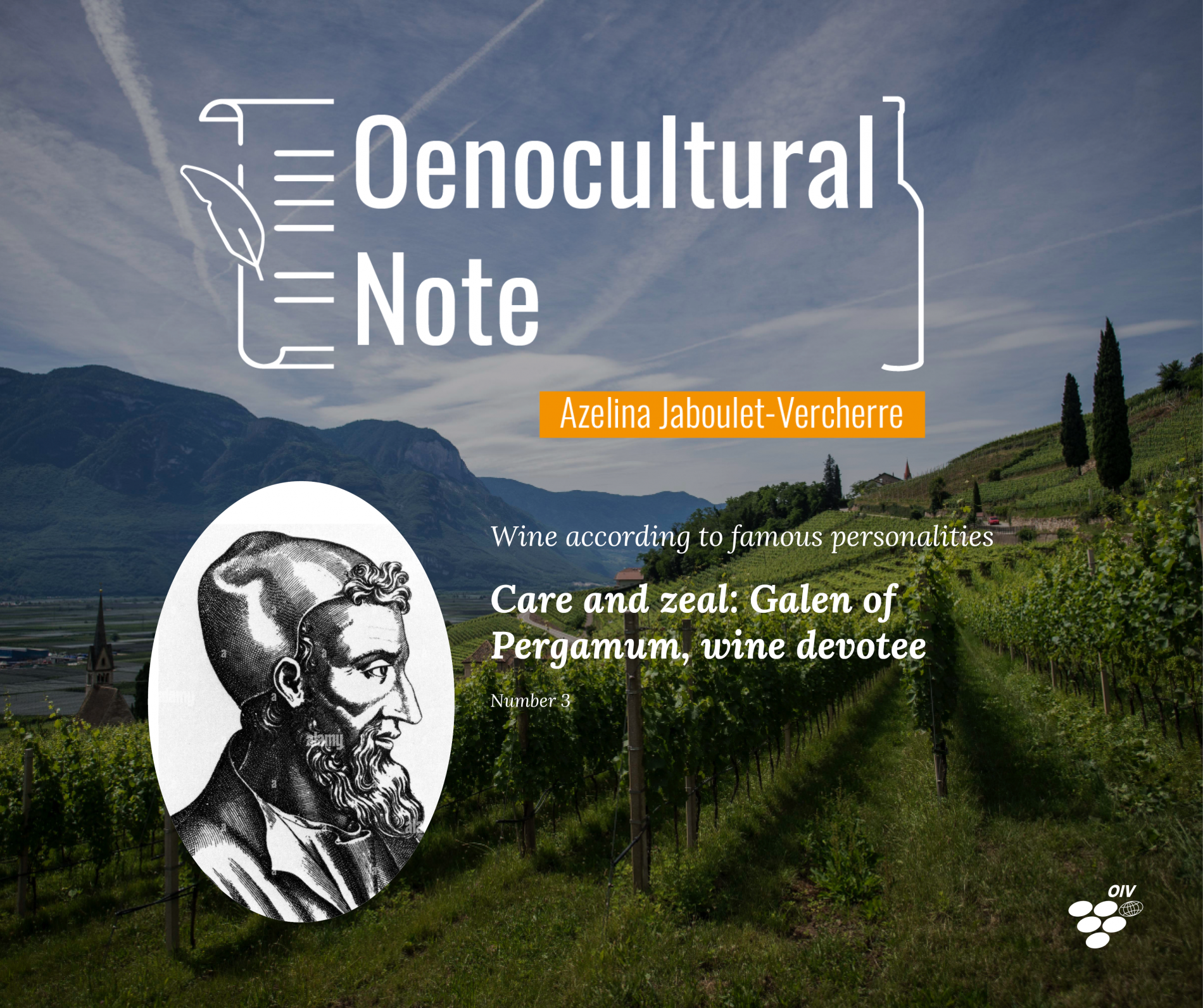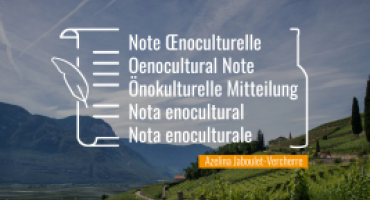
The works of Claudius Galenus (129–200/210) are said to represent nearly one-eighth of the total Greek literature preserved from the time of Homer to the end of the second century CE. Yet many of his treatises have been lost and others transmitted only through translations into Latin, Arabic and, more rarely, Hebrew.
Armed with a solid grasp of classical literature and philosophy, and thus with great sophistical skill, Galen excelled in the field of natural philosophy. Throughout his life, he sought to elevate medical science to the status of an art, while continuing to refine his practice in Smyrna, Corinth, Alexandria and Pergamum, where he was physician to the gladiators1. This search for a noble alliance between theory and practice is perfectly expressed in his treatment of wine, which is discussed throughout his works.
As a famous descendant of the Hippocratic tradition, Galen commented extensively on its corpus, in particular On Regimen in Acute Diseases 2 . In his re-elaboration, Galen expanded the depth and breadth of his predecessor’s rigorous classification and named specific vintages to illustrate the major Hippocratic criteria: colour, taste, substance, fragrance, and medical virtues.
In a treatise on antidotes, Galen identified different types of wine – firm, strong, weak (or watery), bitter, sharp – and rated their storage potential, which was mediocre for “white wines of little substance”, and significant for “strong, sharp and thick white wines”. Sorrento and Falernian wines stood out from the rest. Indeed, he saw them as essentially interchangeable3. Indeed, the reason for the two wines’ similarities had to do with terroir, which Galen acknowledged as important, and linked to the ageing potential of wines (beyond twenty years). Although he was not the first physician to praise the therapeutic uses of wine, he was unique in the meticulousness with which he described the specific qualities of a large number of wines. Such zeal undoubtedly makes him one of the first enlightened oenophiles in the history of thought4.
“Is it necessary to talk about the wine of Sorrento? Everyone knows that it stays young for about twenty years. It keeps its strength during all this time, remains good to drink for a long time, is not inclined to become bitter; it has the same characteristics as Falernian wine.” Galen, On Antidotes, I.3 3
Like most of us, Galen displayed a certain chauvinism in taste, which he balanced with an insatiable curiosity. Beyond the wines of Asia Minor, he recognised the value of Italian wines, on several occasions admitting a particular fondness for the renowned Falernian. Galen referred to it as a wine with an exceptional bouquet, capable of satisfying both the objectivity of the oenophile and the subjective pleasure of the amateur. Even if words alone are not enough to describe sensory experiences, Galen argued that wine can unite emotion and intellect. How else is it possible that when we taste a wine for the first time, we are able to recognise it from a simple description we have read? The very same description can even intensify the experience5.
Within the much-prized category of Falernian wines, Galen distinguished two main varieties according to their smoothness, and he showed particular appreciation for the distinctive Faustian variety6. The sweetness of Faustian created a balance between the astringent and the pungent, the two other main flavours Galen used to classify wine. If flavour revealed the consistency and virtues of a wine, then the smooth complexity of Faustian wine made it an ideal ingredient for the preparation of antidotes, in particular theriac, the most efficacious antidote of them all7.
Galen’s opuscule entitled The Book of Wines deserves particular attention. Extremely concise, it is written in the Hippocratic tradition and was frequently referred to by others physicians in ensuing centuries, rather like a vade mecum of medical literature on wine8. In this pamphlet, Galen primarily examined the substance of different kinds of wine, starting with the clearest, which “men call watery” because of its similarity to water in colour and consistency but also, as he explained, because of its low astringency. The taste of this wine was largely indistinct, and Galen advised against adding a large quantity of water to it so as not to lose the little substance it possessed9. Such wine owed its diuretic value to the speed of its dispersion in the body. For unlike water, it was not cold in nature, although its heat was moderate compared with that of other wines. This clear wine strengthened the lungs and fluidified the humours (not only the blood); its low heat did not harm those who were feverish (unlike other wines and impure waters); and it was also suitable for young people and people of choleric complexion, who had a predominantly hot and dry character. Lastly, it protected against headaches and untimely abdominal swelling10.
After enumerating the qualities of watery wines, Galen then proceeded to give a contrasting description of thick, sweet wines. This dichotomy made it possible for his successors to continue the search for perfect compatibility between the nature of humankind and the substance of wine. For premodern scholars, the search for harmony between wine and the drinker was far more important than finding the perfect pairing between wine and food, which is the primary concern of consumers today.
Galen was inspired, in a metaphorical way, by this proximity between wine and the human body; it allowed him to explain physiological functions, for example by comparing the formation of blood and the production of wine11. In a similar fashion, Galen used this comparison to explain the generation of humours and the acetic character of black bile or vinegar, which has a corrosive effect on the stomach12. He thought that wine followed the movements of the body; its good condition, the formation of healthy blood, was countered by the potential alteration of the humours into corrupt substances.
For Galen, the flavour and fragrance of wine were inseparable from its substance, which forged its uniqueness and complexity. Likewise today, knowledge of wine and the search for multiple ways to talk about it, far from diminishing the emotional character of the tasting experience, opens it up to more subtle dimensions. But beyond a strictly physical phenomenon, Galen devised that tasting bestowed benefits upon the soul, which is necessarily governed by the body’s temperament13. In this way, wine granted Galen the authority to speak both as a servant of the medical art and as a representative of moral philosophy. Might we not heed his insights in our own day?
--------------------------------------------
1 For a presentation of Galen’s ‘medical art’, see Véronique Boudon’s introduction to her edition of Galien (Paris: Les Belles Lettres, 2000), Vol. 2, pp. 168–170; 224–252.
2 See Wesley D. Smith, The Hippocratic Tradition (Ithaca, N.Y.: Cornell University Press, 1979), esp. Chapter 2, ‘Galen’s Hippocratism’, p. 61–176.
3 Galen, On Antidotes I.3, Kühn XIV, 14–19.
4 See the introduction to works of Galien by Véronique Boudon (Paris: Les Belles Lettres, 2000), Vol. 2, pp. 168–170; 224–252.
5 Galen, The Distinction between Pulses, 11, Kühn VIII, 774–5.
6 Galen, On the Therapeutic Method, XII 4, Kühn X, 832.
7 Galen, On Antidotes, I.3, Kühn XIV, 20.
8 Numerous medieval manuscripts contain this text, including the MSS Paris, BnF Lat. 6865, fol. 53vb-54va; N.A.L. 343, fol. 69r-70r. (fol. 74-107 for De alimentis). Their content does not vary significantly from the edition used here (Venice, 1490, in Galen, Opera, Vol. 1, fol. 135vb-136rb).
9 Galen, The Book of Wines, Venice, 1490, Vol. 1, fol. 136rb.
10 Galen, On the Natural Faculties III.15.
11 Galen, On the Usefulness of the Parts of the Body, IV.
12 Galen, On the Natural Faculties, II.9.
13 Galen, The Capacities of the Soul Depend on the Mixture of the Body I.3.
